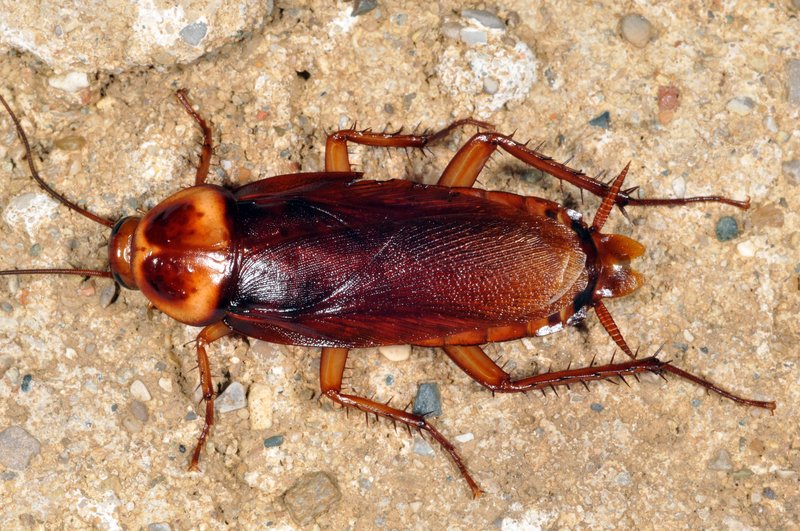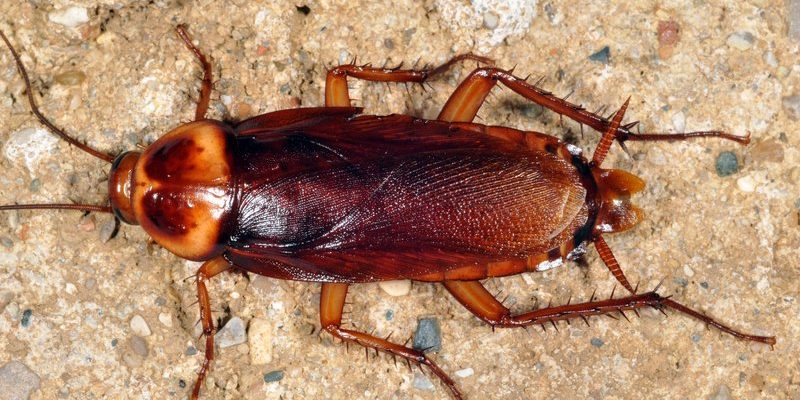
Cockroaches often get a bad rap. Many people see them as creepy critters best avoided at all costs. But here’s the truth: cockroaches are fascinating creatures with some remarkable traits. Imagine a tiny survivor that’s been around since the time of the dinosaurs—pretty mind-blowing, right? These little insects are incredibly resilient, thriving in some of the toughest environments on Earth.
In this article, we’ll dive deep into the world of cockroaches. We’ll cover their anatomy, behavior, habitat, and even how they impact our lives—both positively and negatively. Whether you’re trying to understand more about these bugs for curiosity’s sake or dealing with an unwanted roach in your home, you’ll find valuable information right here.
Understanding Cockroaches
First things first, let’s get acquainted with the basic biology of cockroaches. These insects belong to the order Blattodea, which includes over 4,500 species worldwide. While only about 30 species are actively associated with human dwellings, those few can certainly cause a stir! Cockroaches have a distinct body structure comprising a flattened, oval shape that helps them squeeze into tight spaces and evade predators.
What’s more, cockroaches have long antennae that function like sensory devices, helping them navigate their surroundings. Their legs are strong and fast, enabling them to scurry quickly when they sense danger. In fact, a cockroach can run at speeds of nearly 3 miles per hour! This rapid movement is one of the reasons why they’re so hard to catch.
Additionally, cockroaches have a fascinating way of breathing. Instead of using lungs like mammals, they take in air through tiny openings in their exoskeleton called spiracles. This unique adaptation means they can survive in places where oxygen levels are low, giving them a leg up in harsh environments.
| Feature | Details |
|---|---|
| Size: | Typically 1 to 4 inches long, depending on the species. |
| Habitat: | Warm, dark places like basements, kitchens, and bathrooms. |
| Diet: | Omnivorous; they eat anything from food scraps to paper. |
| Speed: | Up to 3 miles per hour. |
| Lifespan: | About 3 to 15 months, depending on species and environmental conditions. |
Species of Cockroaches
Now that we know a bit about the general characteristics of cockroaches, let’s explore some of the most common species you might encounter. Each species has its unique traits and preferred environments. The American cockroach is one of the largest, often seen in urban settings. It’s reddish-brown, with a characteristic yellow figure eight on its back, which can make it quite noticeable. However, despite its size, it often prefers living in warm, moist areas, such as sewer systems.
The German cockroach, on the other hand, is smaller and is typically light brown with two dark stripes running down its back. This species is notorious for invading homes and restaurants, often hiding in kitchens and bathrooms. Despite being tiny, it breeds quickly, making it a significant pest challenge.
Additionally, we have the Oriental cockroach, known for its dark coloration and slower movement. Unlike the others, it thrives in cooler climates. You won’t find these pests scurrying about as quickly, but their presence indicates poor sanitation, as they are often attracted to decaying organic matter.
Behavior and Diet
What do cockroaches eat? You might be surprised. They are omnivores and will consume almost anything organic—this includes food scraps, paper, glue, and even other dead insects! This scavenger lifestyle allows them to flourish in human environments where food is plentiful.
Interestingly, cockroaches can survive for long periods without food—up to a month in fact—though they need water more frequently. A cockroach can live without its head for several weeks, making it one of the hardiest insects out there. They have a remarkable ability to adapt to their surroundings, which is why they’ve thrived in a variety of environments over millions of years.
You’re probably wondering about their social behavior. Cockroaches are surprisingly social insects. They communicate with each other through pheromones, which can signal danger or attract mates. If they sense a threat, they often gather together, which can result in a massive infestation if conditions are right. So, if you see one, chances are there are more nearby!
Cockroaches and Human Interaction
Cockroaches are not just pests; they play a role in the ecosystem. They help decompose organic material, recycling nutrients back into the soil. Despite this benefit, their presence in homes is often unwelcome. They can carry allergens and diseases, making proper pest control essential.
Now, if you’ve ever had the unfortunate experience of spotting a cockroach in your home, you know the panic it can induce! It’s not just about aesthetics; these insects can pose health risks, as they can spread bacteria and allergens. Babies, elderly, or individuals with compromised immune systems might be particularly vulnerable to the health complications caused by these pests.
This is why practicing good hygiene is essential. Keeping food sealed, cleaning up crumbs, and sealing cracks and crevices can significantly reduce the likelihood of an infestation. If the worst happens and you find them, contacting a pest control professional may be the best way to handle a large-scale problem.
Preventing Cockroach Infestations
So, how do we keep cockroaches at bay? It starts with prevention. Here’s the thing: a clean home is less attractive to these little pests. Regularly sweeping, vacuuming, and wiping down surfaces can drastically reduce the chances of cockroaches setting up camp in your kitchen or bathroom. Sealing all food items in airtight containers is another critical step in keeping your space roach-free.
Don’t ignore plumbing issues, either. Cockroaches are drawn to moisture, so repairing any leaks, fixing drips, and ensuring proper drainage can help eliminate their preferred habitats. Also, check your home for cracks or holes. Cockroaches are fantastic at fitting through tiny spaces, so sealing off entry points is crucial.
If you do face an infestation, there are a variety of strategies you can employ. From DIY traps to professional extermination services, knowing your options can help you tackle the situation more effectively. Remember, being proactive is always better than waiting until a cockroach party is already in full swing!
FAQ
What are the signs of a cockroach infestation?
Signs of a cockroach infestation can vary, but common indicators include seeing live or dead roaches, finding droppings that resemble black pepper or coffee grounds, and noticing a musty odor. Additionally, if you catch a whiff of an oily or pungent smell that wasn’t there before, it might be time to investigate further.
Are cockroaches dangerous to humans?
While cockroaches don’t bite humans, they can be dangerous due to the diseases they carry. They pick up bacteria and pathogens from their environment and can contaminate food or surfaces. For those with allergies or asthma, cockroach droppings and shed skin can trigger serious allergic reactions.
How can I naturally repel cockroaches?
There are various natural methods to deter cockroaches. Essential oils such as peppermint, tea tree, or eucalyptus can act as repellents. Mixing these with water and spraying around entry points may keep cockroaches at bay. Baking soda is also effective; combining it with sugar can create a bait trap that can kill cockroaches when ingested.
Do cockroaches fly?
Yes, some species of cockroaches can fly, but not all of them do. The American cockroach is known to fly short distances, especially when they feel threatened. However, most cockroaches prefer to scurry away quickly rather than take to the air.
Can cockroaches survive without their heads?
Believe it or not, cockroaches can survive for several weeks without their heads! They breathe through spiracles in their body segments, so their head isn’t essential for breathing. They will eventually die due to dehydration, as they can’t drink water without their heads.
How long do cockroaches live?
The lifespan of a cockroach varies by species, but most live between 3 to 15 months. Factors like environmental conditions and access to food can significantly impact their longevity. Under ideal conditions, some species can even live longer!
What attracts cockroaches to my home?
Cockroaches are primarily attracted to food, moisture, and dark places. They love leftovers, crumbs, and anything biodegradable. If your home has a food source available, plus warmth and humidity, you’re likely to attract these pests. Keeping your living spaces clean can help prevent them from feeling at home.
How do I get rid of cockroaches?
Getting rid of cockroaches usually involves a combination of cleanliness and strategic pest control. Start by cleaning your home, sealing food, and fixing leaks. If the problem persists, consider using traps or consulting a pest control professional to address the infestation effectively.
Are there any benefits to cockroaches?
Surprisingly, yes! Cockroaches play a role in the ecosystem by breaking down organic material and recycling nutrients back into the soil. They are also food for various predators, maintaining a balance in the food chain. While they can be pests in human environments, they do contribute to the environment in beneficial ways.
What should I do if I see a cockroach?
If you see a cockroach, don’t panic. Carefully observe where it goes, as this may help you locate their hiding spots. Try to clean the area immediately, and seal any food or debris that could attract more. If you notice several roaches or can’t locate the source, consider reaching out to a pest control expert.

